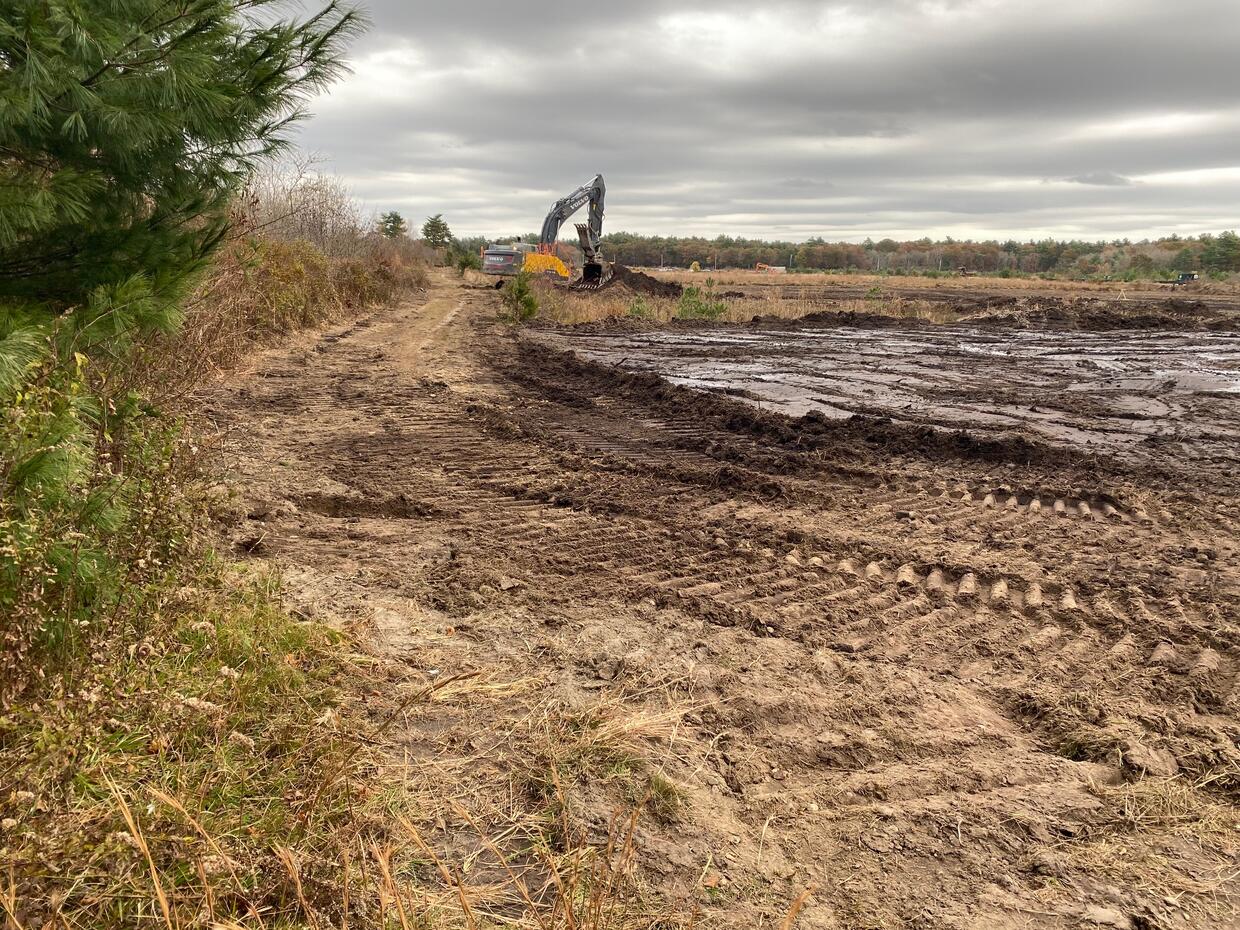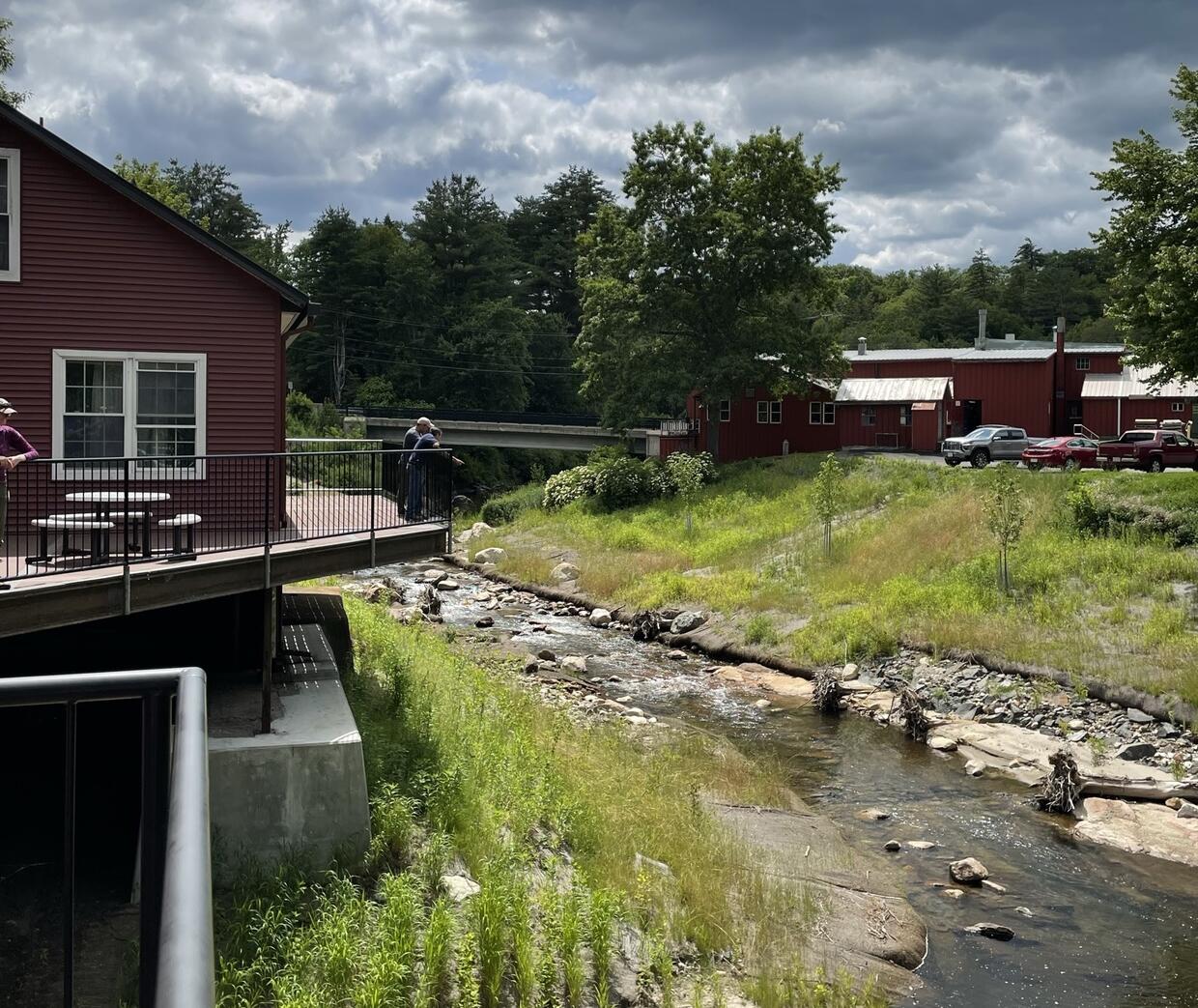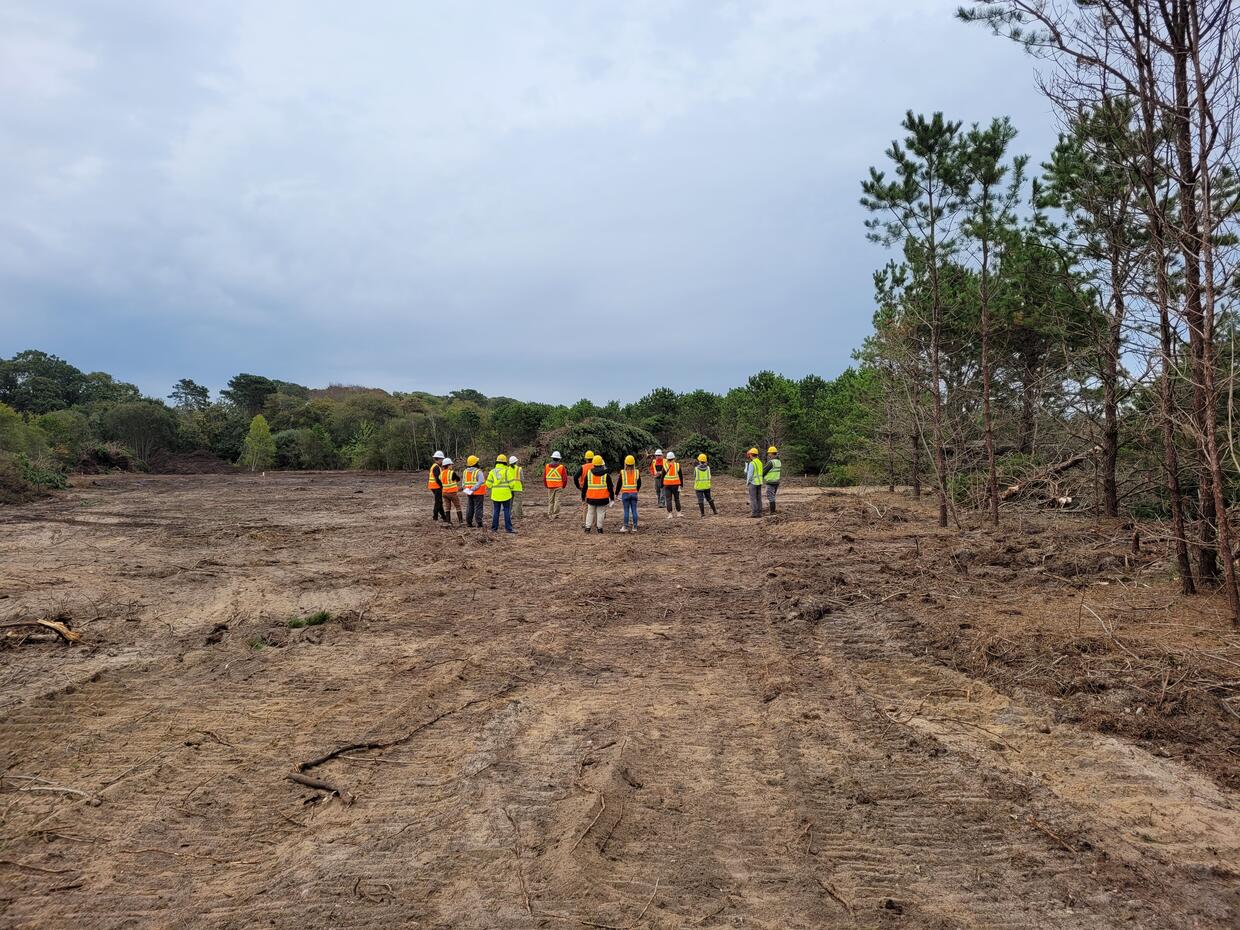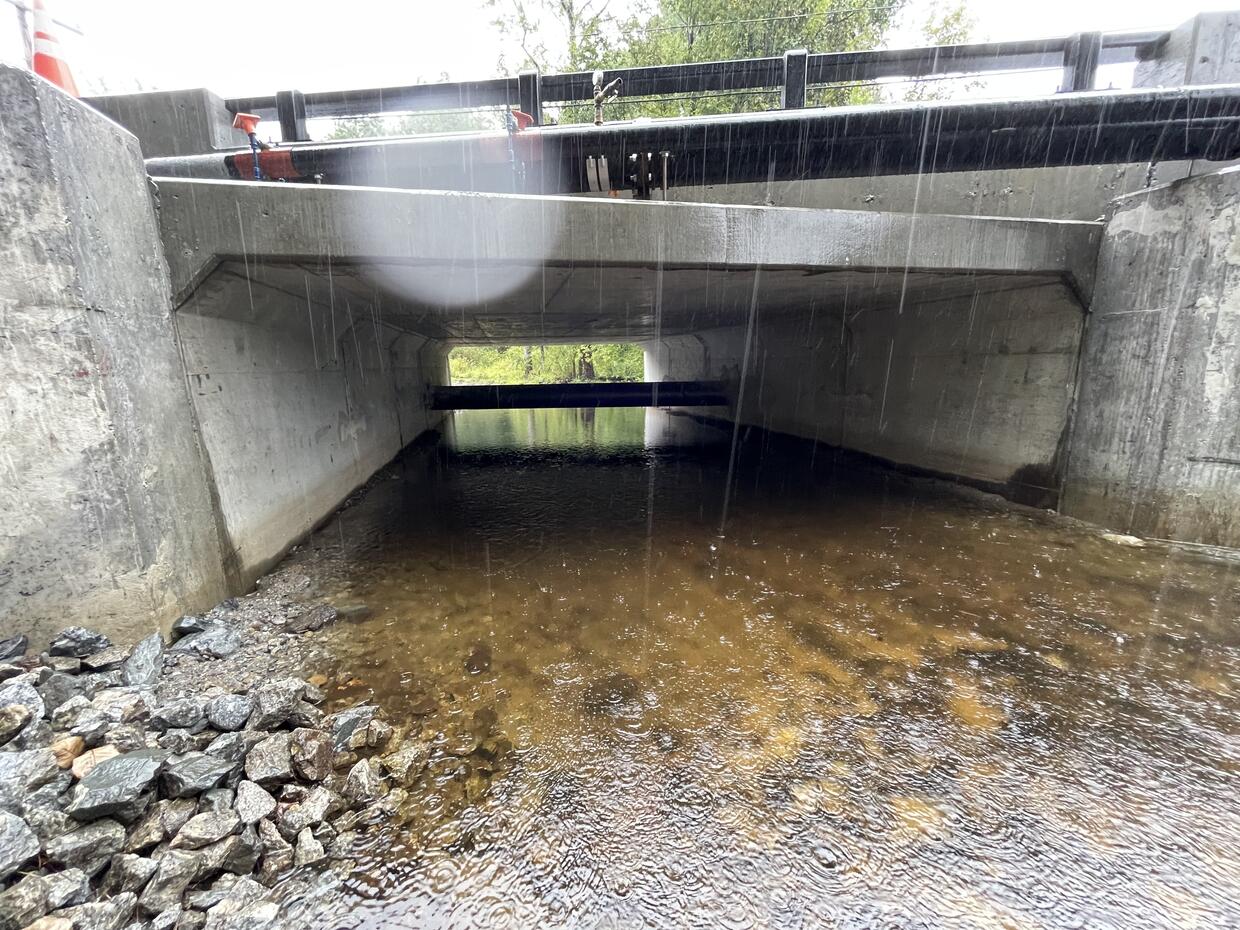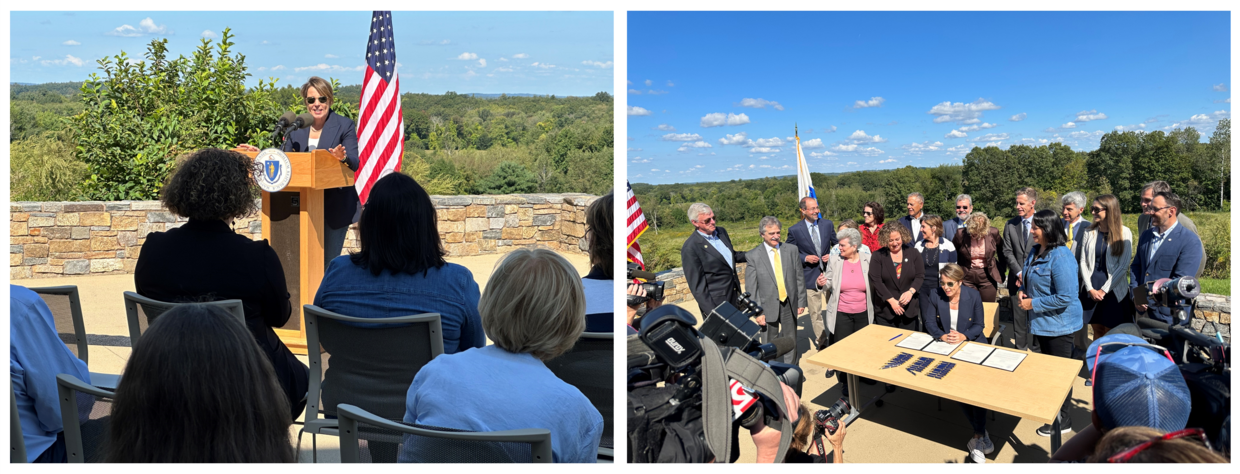Letter from the Director
Dear Friends and Colleagues,
I am writing to you after an eventful summer and fall, which The Boston Globe reported as the second rainiest in recent history. The heavy rain put significant stress on aging infrastructure like dams and culverts, and we saw firsthand the impact of that pressure in the damaging flooding throughout the state. With the growing need to help communities build climate resilience, the importance of DER’s restoration work is highlighted during this pivotal time.
In this issue of Ebb & Flow, we focus on how we’re rising to meet this critical need. We introduce two new branches of the Division that will help DER expand its funding and technical assistance for communities, non-profits, and landowners. We review the four projects that broke ground this fall, adding to the six projects still under construction from this summer. Lastly, we discuss DER’s role in the Commonwealth’s initiative to build statewide capacity for climate adaptation, resilience, and increasing biodiversity.
During this season of gratitude, I am particularly thankful for DER’s municipal, non-profit, agency, and landowner partners. We are drawn to river and wetland restoration for many reasons – the need to build resilience, manage aging infrastructure, save money, help fish and wildlife – and we work together to build a better world for future generations.
I’ll see you on the river,
Beth Lambert, Director
Staff Welcomes
Welcome Lindsay Azor!
Lindsay joined us in September as an Accountant to support our finance team. She has been in the accounting field for eight years and most recently worked as an Accounts Receivable Clerk handling EFT transactions. Outside of combing through numbers, she enjoys cooking and being creative with new recipes. We are thrilled to have her join our team.
We’ll also be celebrating the one-year work anniversary for two of our DER colleagues in early 2024— Anthony Lucivero and Allison Perlman!
Anthony joined DER in January 2023 as our Procurement Specialist. He previously worked as the Executive Director for a non-profit, and before that, was with the Federal Department of Transportation. Outside of supporting our finance team, his favorite hobbies include cooking, woodworking, and hiking with his dog Maximus.
Allison joined in February 2023 as our Restoration Partnerships Program Manager. Prior to joining DER, she worked for the City of Boston managing a variety of resilience, adaptation, and park projects. She also has experience working in ecological restoration and building partnerships in California and Oregon. In her free time, she loves adventuring outdoors with her family, biking, and animals (both domestic and wild).
DER is hiring! We have several positions open now and will add others in the coming months. If you or someone you know is qualified and interested, keep an eye on our DER is Hiring! webpage. Additionally, follow us on Instagram or Twitter to learn about opportunities as soon as they open.
DER Expands and Invests in its Restoration Work
As the impacts of climate change intensify in Massachusetts, the urgent call and demand for restoration grows within our communities and ecosystems. Communities are looking to DER and other restoration organizations to bolster their climate resilience, improve water quality and habitat, secure public safety, and protect the crucial biodiversity of the Commonwealth. As a result, funding for DER has increased, and the Division has added restoration project managers and other critical staff. Now, having doubled in size over the last four years, DER is restructuring its programs to better meet the restoration needs of municipalities, non-profit organizations, and landowners now and for the future.
DER’s technical program staff have restructured to form three branches: Capacity Building, Habitat Restoration, and Technical Services. These three branches will function independently, tackling various aspects of restoration while working collaboratively, sharing expertise, and collectively contributing to restoration projects and initiatives.
The creation of the Capacity Building Branch reflects DER’s increasing investment in programs that help NGOs, municipalities, and others build capacity to lead and support restoration. Currently, the branch includes the Regional Restoration Partnerships and Stream Continuity Programs. These programs provide technical assistance and funding to partners so they can lead high priority restoration projects.
“Growing and reorganizing our branch will help us better serve the specific needs of municipalities. This includes providing funding, products, and services to address capacity requirements more effectively,” said Carrie Banks, Capacity Building Branch Manager. “Better support means we can build a network of leaders throughout the state dedicated to improving community resilience and impactful ecological restoration.”
The Habitat Restoration branch includes the Dam Removal, Cranberry Bog Restoration, and Wetlands Restoration Programs. These programs directly lead, fund, and support restoration projects that benefit communities and restore the ecological health of rivers and wetlands. This Branch manages DER’s popular Priority Projects Program, which has many projects currently in various stages of feasibility, engineering, design, permitting, and construction.
The newly established Technical Services Branch serves as a repository of knowledge, harnessing insights from DER staff and external sources to generate technical resources. This includes restoration planning, GIS expertise, engineering support, and other necessary services.
“As a new branch of DER, the Technical Services Branch will support DER’s ecological restoration programs, while also serving as a resource for the ecological restoration community more broadly. I am looking forward to growing with DER to provide tools, guidance, and resources, that catalyze restoration across the Commonwealth,” said Ian Balcom, Technical Services Branch Manager.
As we look to the future, this expansion and restructuring will allow DER to strengthen internal and external capacity to lead restoration projects, share restoration tools and approaches with a wider audience, and catalyze restoration across the Commonwealth for the benefit of people and the environment.
Construction Update
| DER had four projects under construction this fall. Check out what broke ground: | |
|---|---|
| Mattapoisett Bogs Restoration: The Mattapoisett Bogs Restoration Project will restore 57 acres of retired cranberry bogs in Mattapoisett by restoring connectivity on Tripp’s Mill Brook and improving habitat for rare species. Construction began in November by clearing brush and getting the land ready. Partners on this project include DER, Buzzards Bay Coalition, and Natural Resources Conservation Service. | |
| Manhan River Restoration: Construction finished this fall on the Manhan River Restoration Project. This dam removal helped to restore connectivity to 27 miles of river habitat on the Manhan River, a coldwater tributary to the Connecticut River, by removing the Lyman Pond Dam and relocating a municipal water main. Much of the upstream watershed has been designated Core Habitat or Critical Natural Landscape by the Natural Heritage and Endangered Species Program. This project would not be possible without our project partners including a private dam owner, American Rivers, Mass Audubon, and U.S. Fish and Wildlife Service. | |
| Cold Brook Restoration: The Cold Brook Restoration Project will restore a healthy, self-sustaining wetland and stream system within over 50 acres of former commercial cranberry bog and over 4,000 linear feet of river channel along Cold Brook in Harwich. This work will improve habitat for many aquatic, semi-aquatic, and terrestrial species, as well as improve coastal resilience and water quality. Construction began in September and primary project partners include DER, Harwich Conservation Trust, the Town of Harwich, and U.S. Fish and Wildlife Service. | |
| Heald Street Culvert Replacement: The Town of Pepperell is finishing construction of a culvert replacement on Heald Street that replaces an undersized and degraded metal pipe culvert at risk of failure. The new structure meets the MA Stream Crossing Standards and provides passage for aquatic wildlife on Sucker Brook while reducing flooding and road washout risks. DER is supporting this project through the Culvert Replacement Municipal Assistance Grant Program. | |
In addition to the projects listed above, we saw six DER projects in construction over the summer. If you missed them, you can catch up in our Summer Ebb & Flow issue to read about Abbey Brook Restoration and Revitalization in Chicopee, Monatiquot Restoration in Braintree, Savery Brook Culvert Replacement in Washington, High Street Dam Removal in Bridgewater, Marsh Island Salt Marsh Restoration in New Bedford and Herring River Restoration in Wellfleet.
Biodiversity Executive Order and ResilientMass Report
DER, as part of the Commonwealth of Massachusetts, is proud to be a leader in climate adaptation and resilience building. This fall, the Healey-Driscoll Administration took two big steps to implement initiatives that are geared towards reaching climate goals.
At the end of September, Governor Maura Healey signed an executive order to support the Department of Fish and Game (DFG) in conducting a review of existing biodiversity conservation efforts and establish goals and strategies to achieve a nature-positive future for Massachusetts. Much of DER’s work is targeted at restoring areas that protect biodiversity, so this executive order builds on the progress DFG and DER have already made.
Then in October, the Healey-Driscoll Administration released its Statewide Hazard Mitigation and Climate Adaptation Plan, known as the ResilientMass Plan. This plan outlines over a hundred actions across state agencies that increase resilience and reduce risks and vulnerabilities related to natural hazards and climate change. DER contributed to the development of it and is the lead on eight actions listed in the plan. You can keep track of these and the other 134 actions using the ResilientMass Plan Action Tracker tool. To make sure this plan accounts for the constantly changing climate, this list of actions will remain updated with any appropriate new actions added annually.
These initiatives are coming at a time when the state saw record heat, flooding, coastal damage, and erosion and provides an opportunity for collaboration and progress.
Project Highlight: Herring River Estuary Restoration
Construction has begun on the Herring River Restoration Project, the largest tidal restoration in the northeastern United States. The Herring River in Wellfleet and Truro was once a healthy estuary connecting to Wellfleet Harbor and Cape Cod Bay. In 1909, a dike was built across the mouth of the river, blocking tidal flow to the 1,110-acre estuary. More than a century of tidal restriction has severely degraded water quality and habitat, including near complete loss of native tidal wetlands.
DER and partners are working to restore natural tidal flow to the estuary by replacing the dike and other tidal restrictions with water control structures that will allow the highest tide range possible while protecting low-lying structures. The Project includes extensive monitoring and rigorous adaptive management. Restoring tidal flow to the river will improve water quality, enhance migratory fish passage, restore a significant area of shellfish habitat, and increase coastal resilience to the effects of climate change and sea level rise.
Construction of the Project’s first and largest water control structure, the Chequessett Neck Bridge and tide gates, began in March 2023 and will continue through 2025. Other project elements will begin construction in 2024 and 2025.
To learn more about this important project, Friends of Herring River created two videos which explore the unique nature of the Herring River site. Project partners include DER, Friends of Herring River, Town of Wellfleet, National Park Service, NOAA, USDA Natural Resources Conservation Service, U.S. Fish and Wildlife Service, and many other contributors.
